NEWS
Application statuses in the electronic account of the applicant
Have you already submitted your applications and don’t understand what the application statuses in the account mean? Don’t worry, we have prepared a short cheat sheet for you so you don’t miss anything!
Registered in EDEBO – you have successfully applied for admission with the electronic account.
Needs clarification of the applicant – the educational institution has accepted your application, but certain information needs to be clarified. Look through the comments to the status to see what exactly needs to be clarified and take the necessary actions. If necessary, contact the Admissions Office of the educational institution.
Registered at the educational institution – the university has accepted your application and is considering your participation in the competitive selection.
Admitted to the competition – your application participates in the competitive selection for the budget, and in case you do not receive a budget place – for a contract.
Admitted to the competition at the expense of individuals and/or legal entities – your application participates in the competitive selection for a contract only.
Rejected by the educational institution – the university considered your application but did not allow you to participate in the competitive selection (the comment to the status indicates the reason).
Cancelled by the applicant – you cancelled your application before it was accepted by the educational institution and can submit another one with the same priority.
Cancelled by the applicant (without the right to submit a new application with the same priority) – you cancelled your application when it was accepted by the educational institution and cannot submit another one with the same priority.
Deactivated (due to enrolment for study under the state (regional) order – with one of the applications you passed the competitive selection for the budget, so the remaining applications for the budget have been cancelled.
Recommended for admission (studying under the state (regional) order) – you have successfully passed the competitive selection for the state budget and must meet the requirements for admission.
Recommended for enrolment (studying at the expense of individuals and/or legal entities) – you have successfully passed the competitive selection for the contract and must meet the admission requirements.
Excluded from the list of recommended students (studying under a state (regional) order – you have lost the right to enrol on a state-funded basis (the reason for this is indicated in the status comment).
Excluded from the list of recommended students (studying at the expense of individuals and/or legal entities) – you have lost the right to enrol for admission on a contract basis (the reason is indicated in the status comment).
Included in the order (studying under a state (regional) order) – you are enrolled in a state-funded programme.
Included in the order (training at the expense of individuals and/or legal entities) – you are enrolled in training on a contract basis.
Cancelled enrolment – your enrolment in an educational institution has been cancelled.

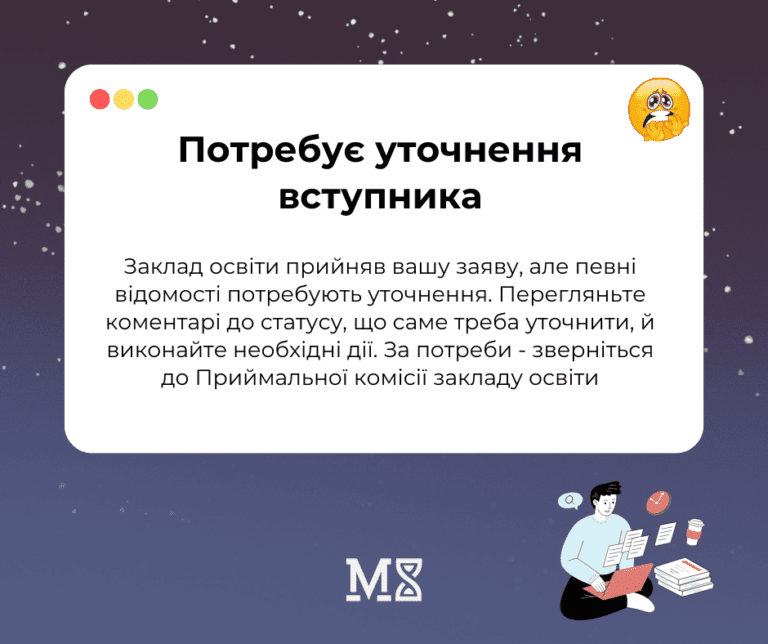

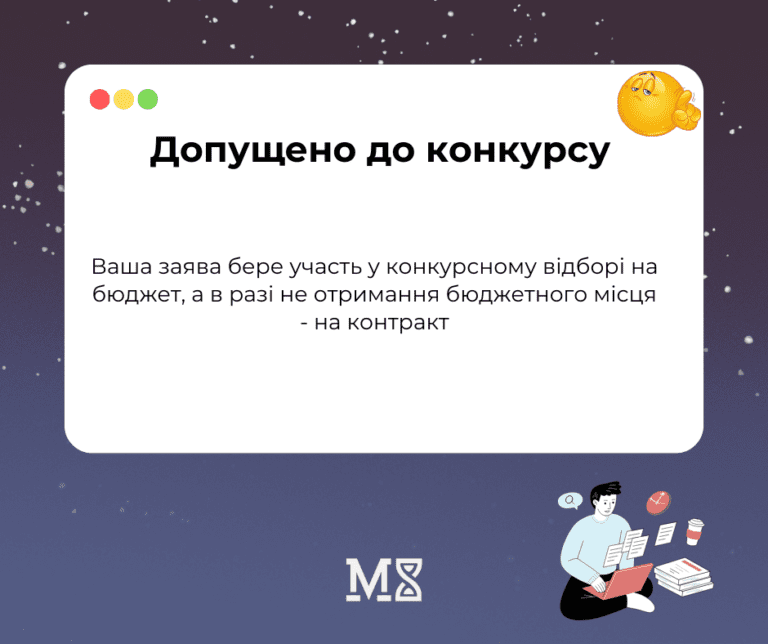
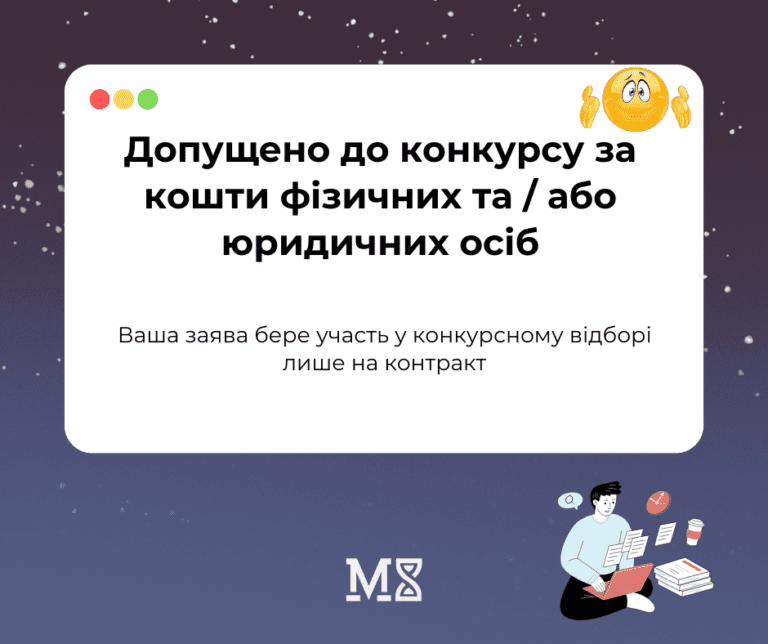
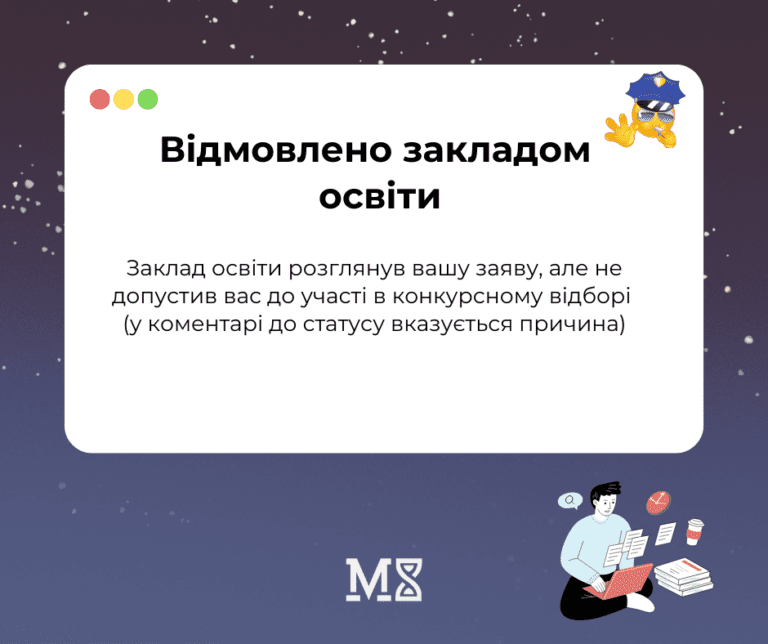


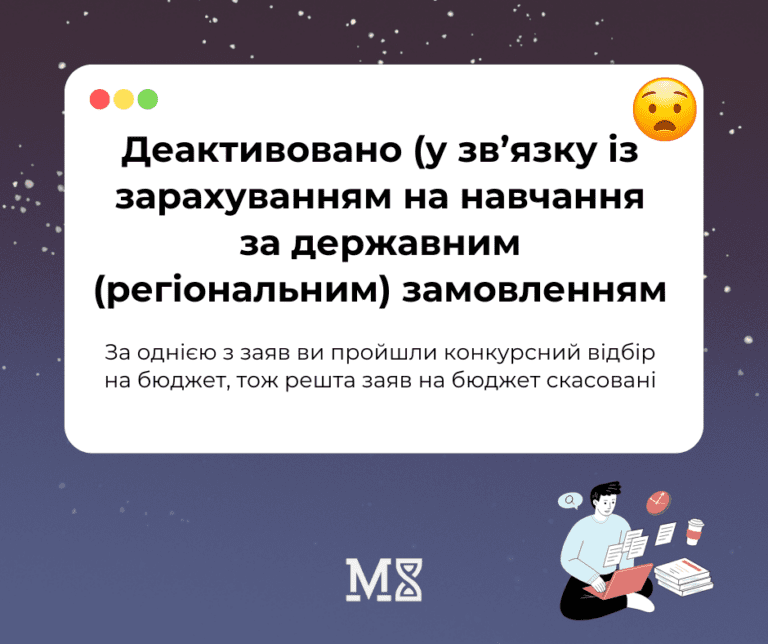
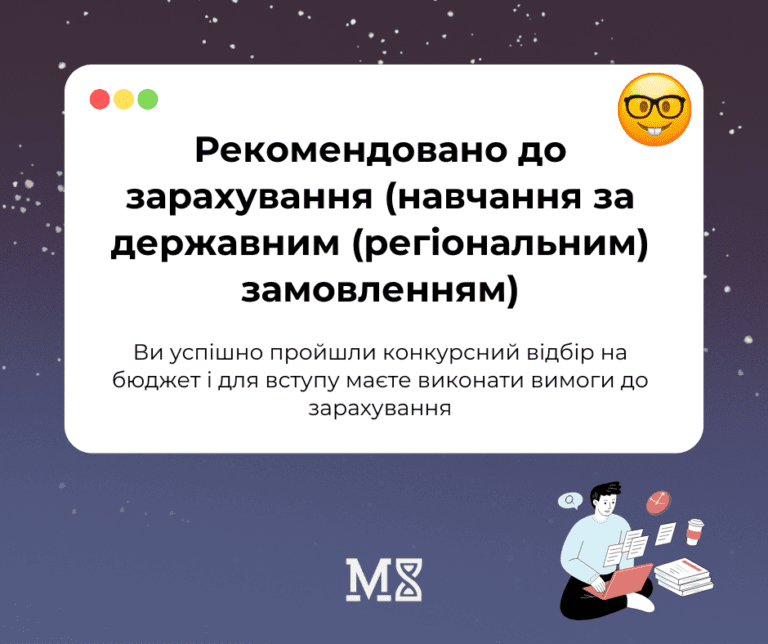
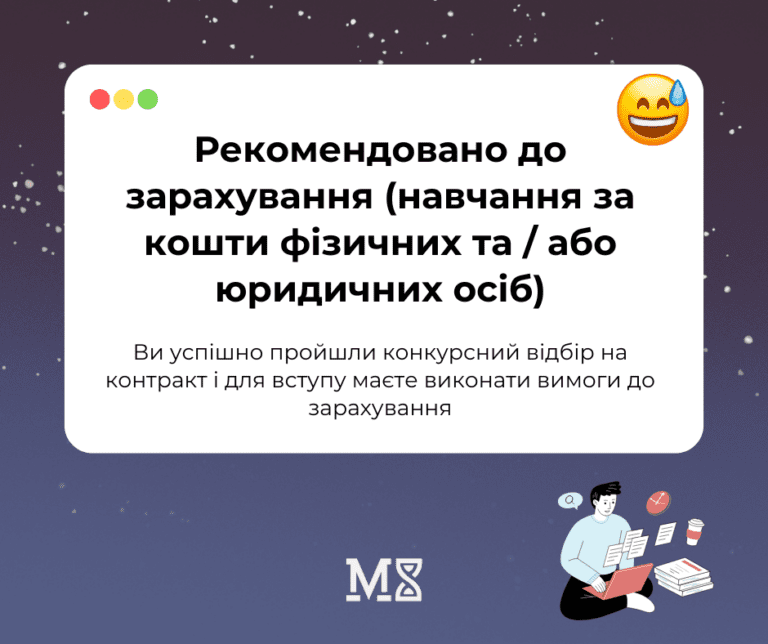


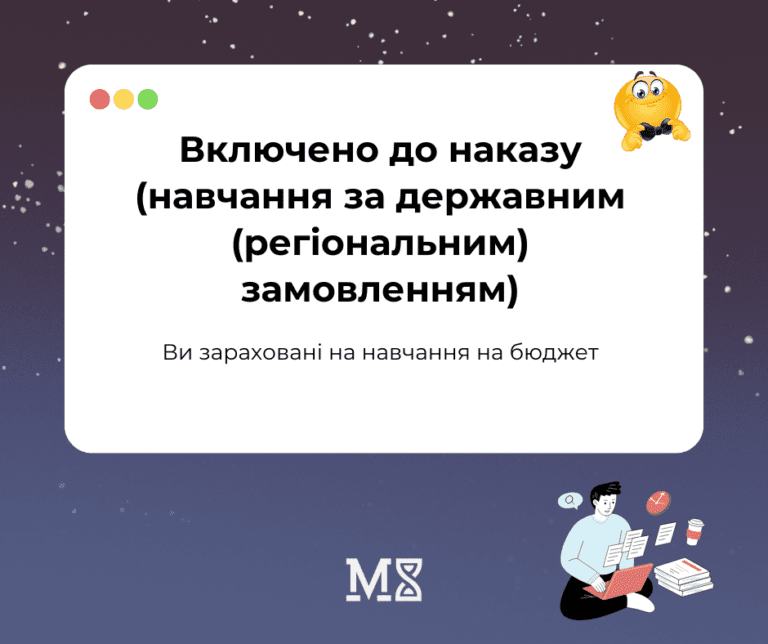
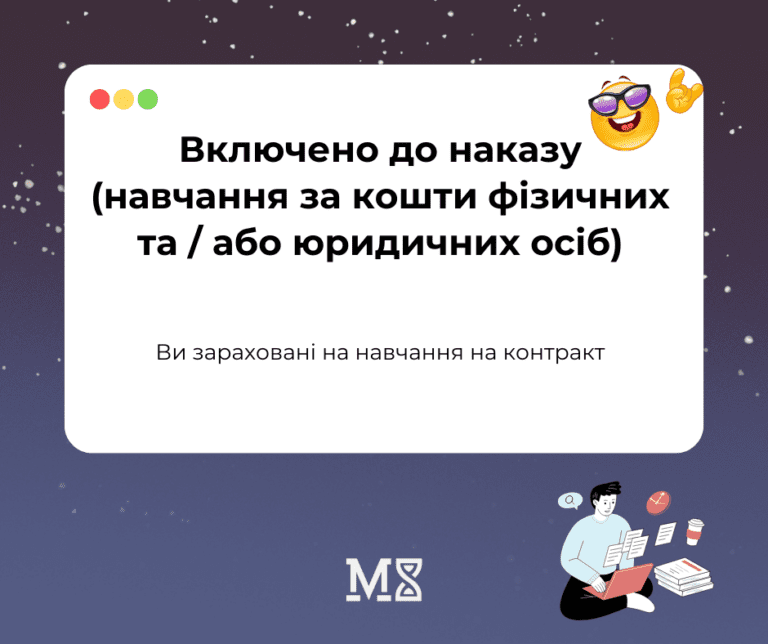

NEWS
What is application prioritization?
Prospective applicants for bachelor’s and master’s programs often do not understand what prioritization is, what everyone is talking about, how to prioritize correctly, and why they are needed at all when applying. Let us try to answer all your questions!
What is a priority?
Prioritization of applications is your distribution of applications from the most desirable, most dreamy to the backup options. Priorities can only be set for state-funded applications, so there are only five of them for state-funded applications. In the fifth place, we put the application to the university and specialty that we consider as a backup, but in the first place – your dream, the university and specialty you want to go to the most.
How do I prioritize my goals?
Your dream should always come first. Even if your chances are minimal, you should still try the competitive situation changes every year, and applicants have different ways of passing entrance exams and submitting applications. The second and third places should be given to those institutions and specialties where you have a real chance of getting in, and the fourth and fifth places should be reserved for backup options, where you will also have the opportunity to enter by state order. How to make the right choice? Don’t hesitate to contact us! We will be happy to help you prioritize and apply correctly.
What does the priority of applications affect?
First of all, it affects your place in the ranking list if you have the same score as other applicants. Whom should I choose if I have the same score? Of course, the person who has a higher priority and a greater desire to study at this particular institution. Therefore, you should never neglect priority and prioritize at random. Sometimes it happens that an applicant sets priorities without thinking, receives a recommendation for one of the highest priorities, but in fact wanted to apply to an institution to which he or she had set a lower priority.
Do they consider all priorities?
Of course, but remember – if the top priority has been fulfilled, i.e. you have received a recommendation for a state order, all your applications are rejected and no longer participate in the competition for the budget. You can receive a recommendation only once during the admission campaign.
Can I change the priority of my applications?
Yes, but very quickly – as soon as the university processes your application, i.e. changes the status to “Registered in a higher education institution”, you lose the opportunity to change the priority. Then you can only cancel your application, but with the loss of priority, that is, only four of your applications will participate in the competition for the budget, not 5.
What to do?
First, take your time! Secondly, contact us! We will help you to prioritize and get into your dream university on a budget!
NEWS
Specially organized session of the UEE!
Important information for applicants to master’s and postgraduate programs – in September, the Ukrainian Center for Educational Quality Assessment will hold a specially organized session of the Unified Entrance Exam, and this is an opportunity to improve your results!
📅 Registration dates: August 12 – 19, 2024 📅 Exam dates: September 12 – 19, 2024 Don’t miss your chance to register!
💰 Financial terms:
- The session is held at the expense of individuals and legal entities
- Registration is considered complete only after successful payment
👥 Who can participate:
- Applicants who have registered for the UEE 2024, but:
- Could not participate.
- Want to improve their result.
- Those who did not register for the UEE 2024 at all
🔍 Why it is important:
- An additional chance to enter a master’s program.
- An opportunity to improve your chances for a budget.
- Flexibility for those who have changed their plans for admission.
💡 Tips:
- Start preparing in advance.
- Carefully read the rules of registration and payment.
- Follow the updates on official resources.
❓ Do you have any questions? Don’t hesitate to ask! We are here to help you on your way to higher education.
NEWS
🚀 State grants for entrants in 2024 📚🎓💰
The Ukrainian government is launching a unique program to support contract students. Here’s what you need to know:
📌 What is a state grant?
- Financial support of 15,000 UAH and 25,000 UAH per year.
- Covers part of the tuition fee.
- Available for all bachelor’s programs and applicants to master’s programs in medicine, veterinary medicine, pharmacy.
🎯 Who can get a grant?
- Applicants after high school or college.
- Applicants for full-time or dual forms of education.
- NMT results in two subjects:
- 150+ points = first-level grant (from UAH 15,000)
- 170+ points = second-level grant (from UAH 25,000)
💡 Program features:
- The amount of the grant may increase depending on the specialty.
- Some specialties have only a second-level grant (170+ points).
- The grant is provided for the entire period of study with payments twice a year.
🔄 How to get a grant? Step-by-step algorithm:.
- Choose an educational institution and program.
- Apply through the applicant’s electronic cabinet.
- After enrollment, apply for a grant through the applicant’s electronic cabinet (September 5 – October 31).
- Pass identification through “Diia”.
- Open a special bank account to transfer funds (money will be transferred twice a year).
❗️ Important:
- This is a pilot project to develop future legislation.
- It does not affect state-funded places – they remain for all applicants.
- For minors, parents or legal guardians must apply.
- Grant funds can only be used to pay tuition fees.
🔍 Additional Information:
- The coefficients for different specialties affect the amount of the grant.
- For detailed infographics, please contact us or visit the website of the Ministry of Education and Science.
Conclusions:
- This is a significant reform of the system of financing higher education in Ukraine, which can change approaches to the choice of specialty and university.
- The system is aimed at supporting talented students and strategically important specialties.
- The introduction of grants can increase competition between universities and improve the quality of education.
- The initiative can help reduce the financial burden on students and their families.
- This is a step towards the realization of the principle «money follows the student» in higher education in Ukraine.
This is your chance to get a quality education with state support! Don’t miss the opportunity! 🇺🇦
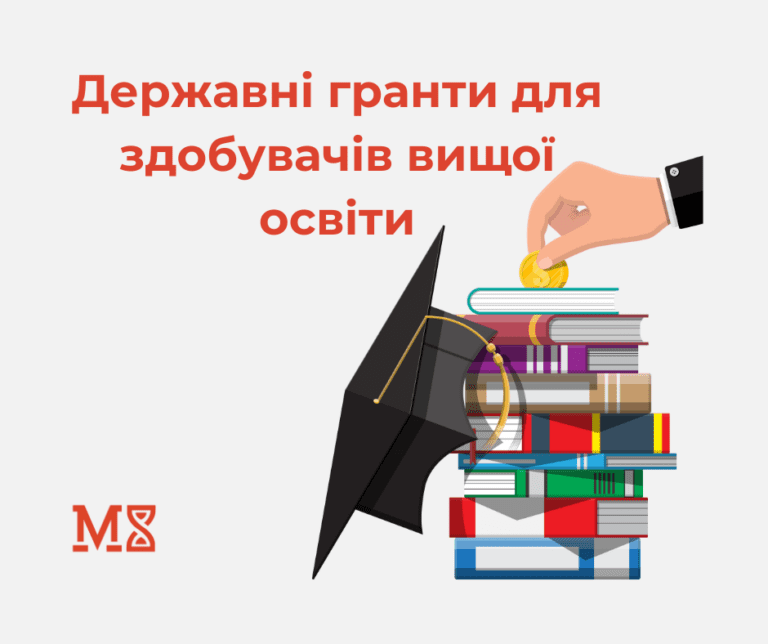
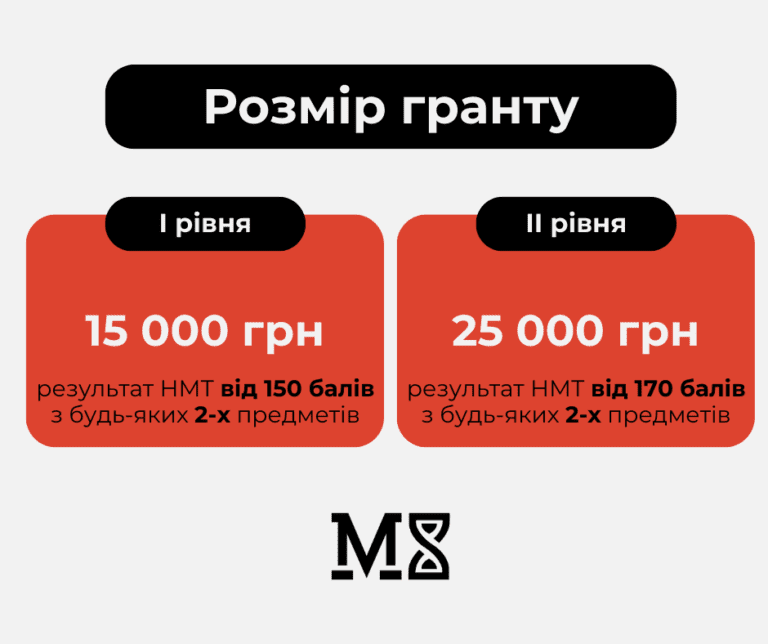



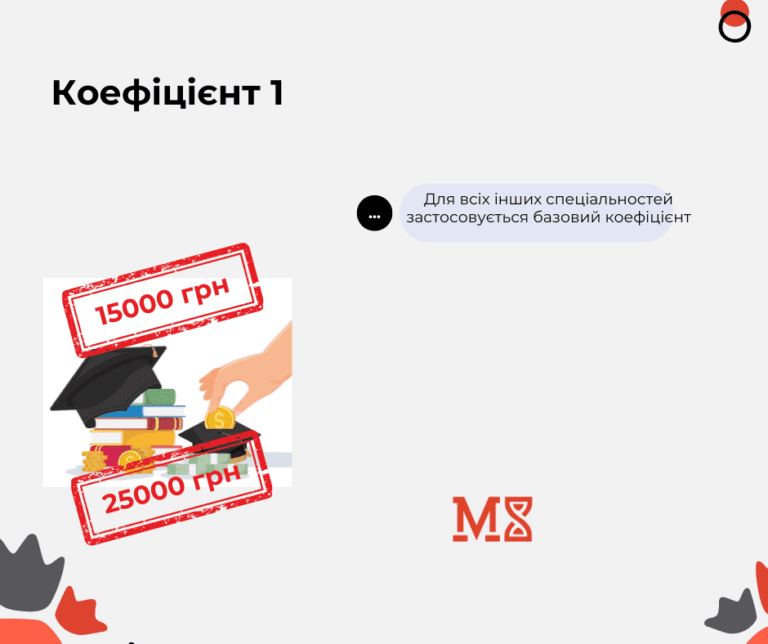
NEWS
Calculator of the competitive score for masters
Have you already calculated your competitive score for a Master’s degree? If you don’t know how to do it quickly and easily, we have developed a calculator for the Master’s degree programme. Follow the link, choose a speciality, enter your UEE scores (foreign language and GNK separately), the results of the UPEE or professional exam and click calculate! The dream score is in front of you! Don’t forget that you need at least 130 points to be admitted on a state-funded programme. Neither sectoral nor regional coefficients are applied to Master’s programmes. Future masters will start applying on 1 August, but you should think carefully now!
The following formula will be used for the competitive selection for Master’s degree programmes:
Competitive score (CS) = 0.2 × P1 + 0.2 × P2 + 0.6 × P3,
where:
- P1 is the score of the UEE general academic competence test;
- P2 – score of the UEE foreign language test;
- P3 – score of the UPEE or the score of a professional exam in the cases provided for in the Admission Procedure 2024.
The list of majors and relevant UPEE tests is in [Appendix 8 of the Admission Procedure 2024].
At the same time, the score of the USQE on a scale of 200 – 400 is converted into a grade P3 on a scale of 100-200 by multiplying the USQE score by:
- 0.5 for speciality 125 «Cybersecurity and Information Protection«;
- 0.625 for the specialities 274 «Road Transport» and 275 «Transport Technologies (by type)».
If, after multiplication, the score of P3 exceeds 200, it is set equal to 200.
Do you have any questions? We are ready to help you sort everything out!
NEWS
Calculator for bachelors
There are a lot of questions from applicants about the calculation of the competition score. What coefficients to use? What and how to multiply? Why do you need to divide everything by the sum of the coefficients? Don’t worry, we’ve already done it all! Use our competitive score calculator and everything will be perfect! Enter your NMT scores, take into account additional conditions (additional points for completing pre-university courses), click «Calculate competitive score» and find out how many points you have!
Remember that the minimum competitive score for participation in the competition for admission to the state order in 2024 cannot be less than 130 points (for specialties 081 Law, 221 Dentistry, 222 Medicine, 226 Pharmacy, Industrial Pharmacy, 228 Pediatrics, 281 Public Management and Administration, 291 International Relations, Public Communications and Regional Studies, 292 International Economic Relations, 293 International Law – at least 150 points for admission by state order and at the expense of individuals and/or legal entities). And don’t forget about the results of the creative competition if you are applying to specialties where it is required!
Please note that the calculator automatically selects the subject that gives the highest competitive score among the subjects of choice (the fourth competitive subject). The sectoral coefficient is valid for applications with the first and second priority for specialties that receive special state support [Appendix 6 to the Admission Procedure-2024]. If the industry coefficient is applied, your score will be automatically multiplied by 1.02.
For the specialties defined in [Appendix 1 to the Admission Procedure-2024] a creative competition is provided, be careful!
The maximum competitive score after multiplying by the coefficients cannot exceed 200.
Do you have any questions? Contact us, we will help!
NEWS
What should you do if I did not pass the UEE / UPEE?
What should we do if you are unable to take part in the main session of the UEE / UPEE due to valid reasons?
Registered participants who were unable to take part in the main session of the the UEE / UPEE due to valid reasons will be able to take the test during the additional session.
Within three calendar days from the date of the main UEE / UPEE session, you can apply for the additional session or you can do it right at the test centre before leaving the test centre. Who is eligible?
- Participants who were unable to start or complete the test due to reasons confirmed by the Regulatory Commissions.
- Participants who did not take part in the main session due to circumstances beyond their control (an application and supporting documents are required).
If you have experienced a procedure violation during the main session, you must submit an application for participation in an additional session on the test day along with your appeal. For example, someone interfered with your test taking.
IMPORTANT! If the dates of the UEE / UPEE coincide with final exams or defences at the university, contact the university to request that the exams and defences be postponed. In case of refusal, attach the refusal document to the application for participation in the additional session of the UEE / UPEE. Without this document, the Regulatory Commission may refuse registration.
The application for participation in the additional session and supporting documents can be submitted to the regional centre for education quality assessment in person, by post or by e-mail.
The decision on admission to the additional session is made by the Regulatory Commission at the regional centre on the basis of the records of the testing centre. Information about the decision will be indicated in the participant’s account.
Applicants may appeal against the decision of the Regulatory Commission to deny admission to the additional session by submitting an application to the Appeal Commission at the Ukrainian Centre for Educational Quality Assessment within three working days from the date of posting information about the refusal on the information page.
NEWS
Registration for creative competitions and individual interviews
Registration for creative competitions and individual interviews at universities has begun! If you are applying for a creative study programme or a study programme where you need to demonstrate sporting achievements or are eligible for an interview, don’t forget to register for the competition! Registration is carried out through the applicant’s electronic cabinet. To do this, you need to:
✅ log in to the electronic account;
✅ choose a university;
✅ select a competition offer;
✅ choose the stream of the creative competition or interview (time and date convenient for you);
✅ submit an application for participation in the creative competition or interview.
You need to wait for confirmation from the educational institution and additional instructions (for example, a link in case of remote testing or an address in case of in-person testing).
Do not forget that each university has its own requirements for the creative competition and interviews.
To participate in the competition for the state funded program, you need to register by 10 July inclusive!
What majors are covered by the creative competition?
🎯 017 Physical Education and Sports (physical ability competition)
🎯 021 Audiovisual Arts and Production
🎯022 Design (in the specialisations Graphic Design, Fashion Design (Footwear), Environmental Design, Industrial Design)
🎯 023 Fine arts, decorative arts, restoration
🎯 024 Choreography
🎯 025 Musical art
🎯 026 Performing arts
🎯 191 Architecture and urban planning
Positive results of NMT are required in any case, but their weight will be minimal in the case of admission to creative specialities.
Who is eligible for admission by interview? Can’t register? Contact us, we will help!
NEWS
Calculate your UEE and UPEE scores
If you have already passed the UEE and UPEE and do not know where to quickly convert your scores to a scale from 100 to 200, we have already done everything! Use a special service on our website. Follow the link, enter the scores you saw on the screen after completing the test (in the UEE, the scores for the foreign language and the GKT were displayed separately, the foreign language score was the first), click “Calculate”, and the scores are in front of you!
Everything is simple, fast and effortless! Are you applying for a master’s or post graduate program and don’t know what to do next after passing the exams? Contact us, we will help!
NEWS
Registration for the Master's degree exam
We would like to remind all applicants to the Master’s programme that in addition to registering an e-cabinet, you also need to register for the professional exam at the university if you are applying for a speciality that does not require the UPEE. These are almost all engineering and technical specialities, medical specialities, etc. There are much fewer majors that require the UPEE.
💡 How do I register for the professional exam?
💡 Go to the applicant’s electronic account.
💡 Select the university.
💡 Select the required study programme.
💡 Select the stream – the time and date of the exam.
💡 Register!
The university must confirm that you are registered and send additional instructions (for example, a link if the exam is remote, or an audience if it is in-person) directly in the applicant’s account or by email. To apply for the state-funded programme, you must register by 16 July inclusive!
Can’t register? Contact us, we will help!